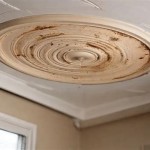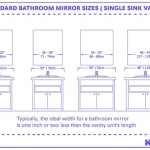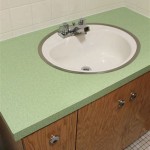Replacing Your Bathroom Sink Faucet: A Step-by-Step Guide
Replacing a bathroom sink faucet is a relatively simple plumbing task that can be completed in under an hour. By following these step-by-step instructions, you can save yourself the cost of hiring a plumber and have a new faucet installed in no time.
Tools and Materials You'll Need:
- Adjustable wrench
- Pliers or channel locks
- New bathroom sink faucet
- Teflon tape
- Bucket or bowl
- Dry cloth
Step-by-Step Instructions:
- Turn off the water supply: Locate the shut-off valves under the sink and turn them clockwise to shut off both the hot and cold water supply.
- Disconnect the water supply lines: Use an adjustable wrench to loosen the nuts connecting the water supply lines to the old faucet. Be careful not to overtighten or cross-thread the nuts.
- Remove the old faucet: Loosen the mounting nuts located underneath the sink that hold the faucet in place. Gently lift the old faucet up and out of the sink.
- Clean the sink surface: Use a dry cloth or rag to clean the surface of the sink where the new faucet will be installed.
- Apply Teflon tape: Wrap a few layers of Teflon tape clockwise around the threads of the new faucet's water supply connections.
- Install the new faucet: Place the new faucet into the sink hole and secure it with the mounting nuts. Tighten the nuts until they are snug, but avoid overtightening.
- Connect the water supply lines: Hand-tighten the water supply lines to the corresponding connections on the new faucet. Use an adjustable wrench to further tighten the connections, but be careful not to overtighten.
- Turn on the water supply: Slowly turn on the shut-off valves under the sink to restore water flow. Check for any leaks around the connections.
Tips for a Successful Replacement:
- If your sink has a pop-up drain, be sure to disconnect the drain rod from the old faucet before removing it.
- Use two wrenches when tightening the water supply lines: one to hold the faucet steady and the other to tighten the nut.
- If the water supply lines are old or corroded, it is recommended to replace them as well.
- Do not overtighten the mounting nuts or water supply connections. This can damage the faucet or fittings.
- If you encounter any leaks after installation, tighten the connections further or check for damaged parts.

Replacing A Bathroom Faucet Fine Homebuilding

How To Replace A Bathroom Faucet Home Repair Tutor

Diy How To Replace A Bathroom Sink Faucet Remove Install

Diy How To Replace And Install A Bathroom Sink Faucet

How To Replace A Bathroom Faucet Removal And Installation

How To Replace A Bathroom Faucet Removal And Installation

Diy Projects Ideas Replace Bathroom Faucet Faucets

Bathroom Faucet Replacement For Beginners Making Maanita

Diy How To Replace And Install A Bathroom Sink Faucet

How To Replace A Bathroom Faucet Removal And Installation
Related Posts







